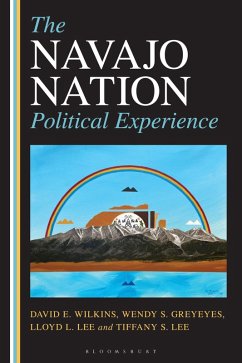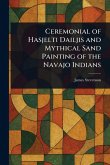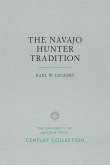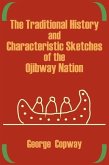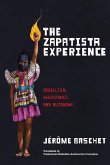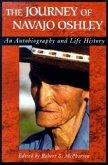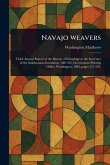David E. Wilkins, Lloyd L. Lee, Tiffany S. Lee, Wendy Greyeyes
The Navajo Nation Political Experience
David E. Wilkins, Lloyd L. Lee, Tiffany S. Lee, Wendy Greyeyes
The Navajo Nation Political Experience
- Broschiertes Buch
- Merkliste
- Auf die Merkliste
- Bewerten Bewerten
- Teilen
- Produkt teilen
- Produkterinnerung
- Produkterinnerung
Tribal nations, like the Navajo nation, have proven to be remarkably adept at retaining and exercising ever-increasing amounts of self-determination even when faced with powerful external constraints and limited resources. Now in this fifth edition of The Navajo Nation Political Experience, the current Diné political developments of the last decade are analyzed thoroughly and accessibly against a historical backdrop. The Diné people and their leaders have recently experienced a host of events that dramatically affected the shape of the nation. David Wilkins and new co-authors Wendy Greyeyes,…mehr
Andere Kunden interessierten sich auch für
![Ceremonial of Hasjelti Dailjis and Mythical Sand Painting of the Navajo Indians Ceremonial of Hasjelti Dailjis and Mythical Sand Painting of the Navajo Indians]() James StevensonCeremonial of Hasjelti Dailjis and Mythical Sand Painting of the Navajo Indians17,99 €
James StevensonCeremonial of Hasjelti Dailjis and Mythical Sand Painting of the Navajo Indians17,99 €![The Navajo Hunter Tradition The Navajo Hunter Tradition]() Karl W. LuckertThe Navajo Hunter Tradition30,99 €
Karl W. LuckertThe Navajo Hunter Tradition30,99 €![The Traditional History and Characteristic Sketches of the Ojibway Nation The Traditional History and Characteristic Sketches of the Ojibway Nation]() George CopwayThe Traditional History and Characteristic Sketches of the Ojibway Nation19,99 €
George CopwayThe Traditional History and Characteristic Sketches of the Ojibway Nation19,99 €![The Zapatista Experience The Zapatista Experience]() Jérôme BaschetThe Zapatista Experience16,99 €
Jérôme BaschetThe Zapatista Experience16,99 €![The Journey of Navajo Oshley The Journey of Navajo Oshley]() Robert McphersonThe Journey of Navajo Oshley21,99 €
Robert McphersonThe Journey of Navajo Oshley21,99 €![The African American Experience in Cyberspace The African American Experience in Cyberspace]() Abdul AlkalimatThe African American Experience in Cyberspace33,99 €
Abdul AlkalimatThe African American Experience in Cyberspace33,99 €![Navajo Weavers Navajo Weavers]() Washington MatthewsNavajo Weavers14,99 €
Washington MatthewsNavajo Weavers14,99 €-
-
-
Tribal nations, like the Navajo nation, have proven to be remarkably adept at retaining and exercising ever-increasing amounts of self-determination even when faced with powerful external constraints and limited resources. Now in this fifth edition of The Navajo Nation Political Experience, the current Diné political developments of the last decade are analyzed thoroughly and accessibly against a historical backdrop. The Diné people and their leaders have recently experienced a host of events that dramatically affected the shape of the nation. David Wilkins and new co-authors Wendy Greyeyes, Lloyd Lee, and Tiffany Lee provide the only comprehensive analysis of Diné governance structures, leaders, and political participation.
Produktdetails
- Produktdetails
- Verlag: Bloomsbury Publishing Plc
- 5. Auflage
- Seitenzahl: 416
- Erscheinungstermin: 19. Februar 2026
- Englisch
- Abmessung: 229mm x 152mm x 28mm
- Gewicht: 454g
- ISBN-13: 9781538191361
- ISBN-10: 1538191369
- Artikelnr.: 74358855
- Herstellerkennzeichnung
- Libri GmbH
- Europaallee 1
- 36244 Bad Hersfeld
- gpsr@libri.de
- Verlag: Bloomsbury Publishing Plc
- 5. Auflage
- Seitenzahl: 416
- Erscheinungstermin: 19. Februar 2026
- Englisch
- Abmessung: 229mm x 152mm x 28mm
- Gewicht: 454g
- ISBN-13: 9781538191361
- ISBN-10: 1538191369
- Artikelnr.: 74358855
- Herstellerkennzeichnung
- Libri GmbH
- Europaallee 1
- 36244 Bad Hersfeld
- gpsr@libri.de
David E. Wilkins is E. Claiborne Robins Distinguished Professor in leadership studies at University of Richmond. A citizen of the Lumbee Nation of North Carolina, Wilkins earned his PhD in political science from the University of North Carolina, Chapel Hill. His academic work concentrates on Native politics and governance, with particular attention to the transformations that Indigenous governments have both coercively and voluntarily engaged in from pre-colonial times to the present. Wilkins in the author or editor of numerous books, including mostly recently Documents of Native American Political Development: 1933 to Present; Red Prophet: The Punishing Intellectualism of Vine Deloria, Jr.; American Indian Politics and the American Political System, fourth edition; Dismembered: Native Disenrollment and the Battle for Human Rights; The Navajo Political Experience, fourth edition; and Hollow Justice: A History of Indigenous Claims in the United States. Wendy Greyeyes (Diné) is assistant professor of Native American studies at The University of New Mexico. She earned her PhD in sociology from the University of Chicago and her research focuses on political sociology, organizational analysis, Indigenous education, tribal sovereignty, and Native Nation building. Before entering academia, she was a tribal liaison for the Arizona Teacher Excellence Program and Homeland Security, a grassroots manager for the Indian Self Reliance Initiative in Arizona, a statistician for the Department of Diné Education, and a program analyst/chief implementation officer for the Bureau of Indian Education. She formerly served as the co-chair for the National Indian Education Association's Advocacy Committee and a former faculty for the Institute for American Indian Education. She currently serves as the Navajo representative member for the New Mexico Indian Education Advisory Council (IEAC), president for the Diné Studies Conference, Inc., a member of the American Indian Studies Association (AISA), faculty advisor for the UNM Native American Alumni Chapter, and faculty advisor for Kiva Club. She is the author of A History of Navajo Education: Disentangling Our Sovereign Body. Lloyd L. Lee (Diné) is professor and faculty graduate director in the department of Native American studies at The University of New Mexico, where he is also director of the Center for Regional Studies and editor of the journal,Wicazo Sa Review. He earned his PhD in American Studies from The University of New Mexico and his research focuses on Native American identity, masculinities, leadership, and Native Nation building. He is the author of Diné Identity in a 21st Century World and Diné Masculinities: Conceptualizations and Reflections; co-author of Native Americans and the University of New Mexico; and edited Navajo Sovereignty: Understandings and Visions of the Diné People and Diné Perspectives: Reclaiming and Revitalizing Navajo Thought. He currently sits on the Council for the American Indian Studies Association (AISA). Lee earned the Presidential Teaching Fellow Award 2017-2019 at the University of New Mexico. Tiffany S. Lee (Diné/Lakota) is professor and chair of the Native American studies department at The University of New Mexico. She earned her PhD in sociology of education from Stanford University and researches Native youth perspectives with regard to language reclamation and identity, as well as socio-culturally centered educational approaches. She has published numerous articles and book chapters in scholarly publications, as well as community-based research and government reports. She is the former President of the Navajo Studies Conference, Inc. and a former high school social studies and language arts teacher at schools on the Navajo Nation and at Santa Fe Indian School. She is also a member of the New Mexico Indian Education Advisory Council for the New Mexico Office of Indian Education.
PART I: Foundations of Diné Government and Relations with the United States
Chapter 1: Dine National Government: An Historical Overview
Chapter 2: A Nation Within a Nation
Chapter 3: Federal Indian Policy: An Historical Overview
PART II: Institutions of Diné Government
Chapter 4: The Framework of Navajo Government Today
Chapter 5: The Navajo Nation Legislature (The Council)
Chapter 6: The Navajo Nation Executive (The President and Vice-President)
Chapter 7: The Navajo Nation Judiciary (The Courts)
Chapter 8: Local Governing Jurisdictions
PART III: Political Dynamics of Diné Government
Chapter 9: Interest Groups and Diné Politics: From Without and Within
Chapter 10: The Navajo Nation and the Media
Chapter 11: Diné Voting, Elections, and Campaign Finances
Chapter 12: Diné Political Economy
APPENDICES
Chapter 1: Dine National Government: An Historical Overview
Chapter 2: A Nation Within a Nation
Chapter 3: Federal Indian Policy: An Historical Overview
PART II: Institutions of Diné Government
Chapter 4: The Framework of Navajo Government Today
Chapter 5: The Navajo Nation Legislature (The Council)
Chapter 6: The Navajo Nation Executive (The President and Vice-President)
Chapter 7: The Navajo Nation Judiciary (The Courts)
Chapter 8: Local Governing Jurisdictions
PART III: Political Dynamics of Diné Government
Chapter 9: Interest Groups and Diné Politics: From Without and Within
Chapter 10: The Navajo Nation and the Media
Chapter 11: Diné Voting, Elections, and Campaign Finances
Chapter 12: Diné Political Economy
APPENDICES
PART I: Foundations of Diné Government and Relations with the United States
Chapter 1: Dine National Government: An Historical Overview
Chapter 2: A Nation Within a Nation
Chapter 3: Federal Indian Policy: An Historical Overview
PART II: Institutions of Diné Government
Chapter 4: The Framework of Navajo Government Today
Chapter 5: The Navajo Nation Legislature (The Council)
Chapter 6: The Navajo Nation Executive (The President and Vice-President)
Chapter 7: The Navajo Nation Judiciary (The Courts)
Chapter 8: Local Governing Jurisdictions
PART III: Political Dynamics of Diné Government
Chapter 9: Interest Groups and Diné Politics: From Without and Within
Chapter 10: The Navajo Nation and the Media
Chapter 11: Diné Voting, Elections, and Campaign Finances
Chapter 12: Diné Political Economy
APPENDICES
Chapter 1: Dine National Government: An Historical Overview
Chapter 2: A Nation Within a Nation
Chapter 3: Federal Indian Policy: An Historical Overview
PART II: Institutions of Diné Government
Chapter 4: The Framework of Navajo Government Today
Chapter 5: The Navajo Nation Legislature (The Council)
Chapter 6: The Navajo Nation Executive (The President and Vice-President)
Chapter 7: The Navajo Nation Judiciary (The Courts)
Chapter 8: Local Governing Jurisdictions
PART III: Political Dynamics of Diné Government
Chapter 9: Interest Groups and Diné Politics: From Without and Within
Chapter 10: The Navajo Nation and the Media
Chapter 11: Diné Voting, Elections, and Campaign Finances
Chapter 12: Diné Political Economy
APPENDICES

